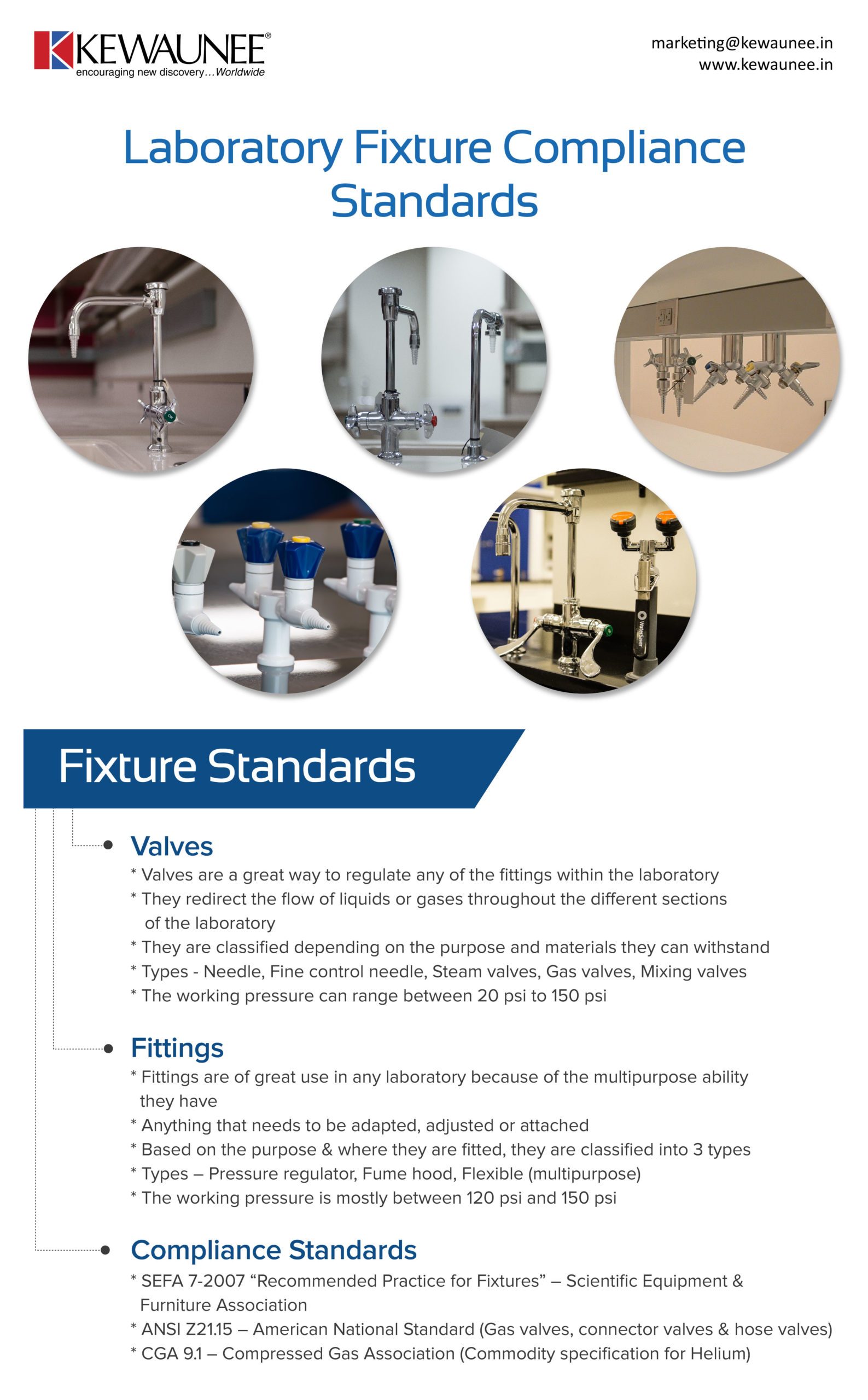Laboratory Fixture Compliance Standards
Laboratory Fixtures are a lifesaver for any laboratory as they can help fix any odd fitting in either the equipment or piping/ tubing connections. They help in regulating the flow of liquids and gases through these connections for which; the specifications need to be very clear what they can handle.
In this infographic, we’ve listed the different laboratory fixtures that are available and how they can be used. At Kewaunee International, we have fixtures for all purposes which are made in line with international regulatory guidelines. You can find here our range of products.
| Laboratory Fixtures | Key pointers |
| Valves |
|
| Fittings |
|
| Compliance Standards |
|
Comments are closed.











